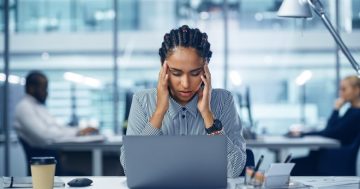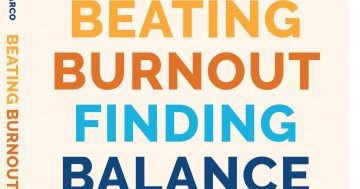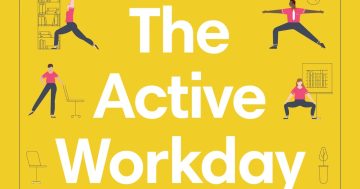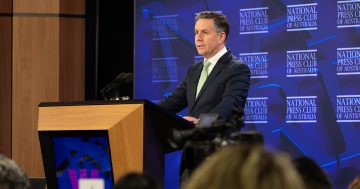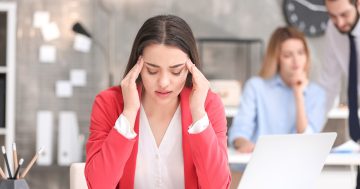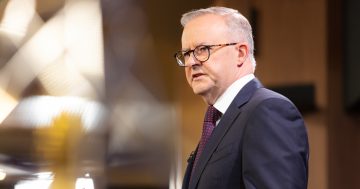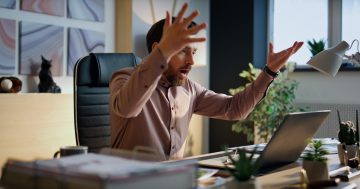Arianna Huffington* reviews the original ‘discovery’ of burnout and suggests ways it can be mitigated in the midst of the global pandemic.
 Years before the COVID-19 pandemic, the world was already experiencing an epidemic of burnout.
Years before the COVID-19 pandemic, the world was already experiencing an epidemic of burnout.
The phenomenon has only gotten worse as the pandemic has progressed.
Not surprisingly, rising rates of burnout were first felt by doctors, nurses and other frontline healthcare workers.
Soon, the conversation expanded to include those working from home as well as frontline workers in a range of service industries.
To better understand this we can look back nearly 50 years to the moment when the modern idea of burnout originated.
The concept was developed in the mid-1970s by two researchers working independently — psychoanalyst, Herbert Freudenberger, and Christina Maslach, a Professor of Psychology at the University of California, Berkeley.
Freudenberger is credited with coining the term, or at least bringing it into modern usage.
In the 1970s he was working at a free substance abuse clinic in New York City, putting in punishing hours.
Finally, Freudenberger agreed to take a vacation with his family.
After working late the night before their departure, he couldn’t get out of bed the next morning and they missed their flight.
Trying to make sense of the experience, he recorded himself talking about it. He was taken aback by the anger and exhaustion he could hear in his voice.
He decided to look into the mental wellbeing of the other caregivers at the clinic, and he was struck by how many parallels there were between them and the addicts they cared for.
At the time, ‘burnout’ was a slang term to describe extreme drug use.
However, when Freudenberger started using it for those working at the clinic, they promptly took it up.
The term also has origins in the effects of a fire as Freudenberger vividly put it.
“As a practicing psychoanalyst, I have come to realise that people, as well as buildings, sometimes burn out,” he said.
“Under the strain of living in our complex world, their inner resources are consumed as if by fire, leaving a great emptiness inside, although their outer shells may be unchanged.
“Only if you venture inside will you be struck by the full force of the desolation.”
At about the same time Maslach was studying how people respond to crises.
She began by interviewing people in service sectors and started to notice common themes.
She began asking if the term burnout described their experience.
What she found was that it was more than just a psychological concept: “The people themselves said this term captured what they were feeling.”
“My interest in the topic really was stoked by the experiences of the people that I kept talking to over time, and that’s true even now,” she said.
“I’d be interviewing people, and they were getting angry and upset and crying. This was not something trivial.”
Along with Susan E. Jackson, now a professor at Rutgers, she developed the Maslach Burnout Inventory, a widely used framework for identifying and measuring burnout.
Of course, in some form, burnout has always been with us, but the pandemic has intensified it exponentially.
That’s why it’s even more important to be deliberate about employing tools and strategies in our daily lives to manage our stress and avoid burnout.
At Thrive we call these strategies Microsteps — they’re science-backed steps that we can incorporate into our lives right away.
Here are five Microsteps to take with you into 2021 for a New Year of less stress, more calm and no burnout.
When you wake up, don’t start your day by looking at your phone.
Take one minute to focus on your intention for the day or remember what you’re grateful for or simply take some conscious breaths.
Practice box breathing in moments of stress.
This technique, practiced by Navy SEALS, is a powerful stress reliever that works by activating our parasympathetic nervous system, which lowers our stress.
Just inhale for a count of four, hold the air in your lungs full for a count of four, then exhale for a count of four.
Set a news cut-off time at the end of the day.
Being informed can help us feel more prepared in the middle of a public health crisis.
However, setting healthy limits to our media consumption can help us have a recharging night’s sleep and put the stressful news into perspective.
Right now, send a message to a neighbour or friend and ask how you can help them.
Reaching out to others puts our stresses and worries into perspective and gives us a much needed ‘helper’s high’ that boosts our wellbeing.
Declare an end to the working day.
The truth is that our working day never ends so we need to declare an end.
Mark it by turning off our phone and ideally charging it outside of our bedroom.
*Arianna Huffington is the founder and Chief Executive of Thrive Global; the founder of The Huffington Post, and the author of 15 books, including, most recently, Thrive and The Sleep Revolution.
This article first appeared at LinkedIn.


